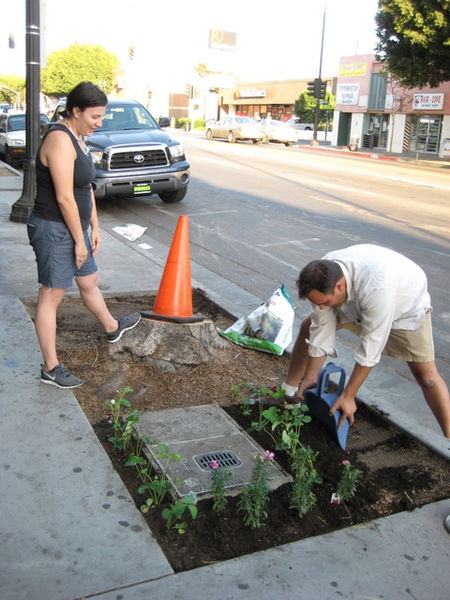In 1978, New Zealand artist Barry Thomas occupied a vacant lot in the city of Wellington, and through an act of ‘guerilla gardening’ transformed it into a cabbage patch. After owners had abandoned the lot, locals grew angry at the eyesore that the lot presented. Thomas and a group of his friends decided to plant 180 cabbage seedlings to transform the space. Over the patch’s six month duration, the small group of instigators grew to the larger neighborhood, with individuals aiding in its care and holding events within the space. On the impact of its presence, Thomas commented, “Whether they [the public] just leave them, steal them or run them over with motorbikes, it’s part of the art because it’s a reflection of our culture.” Ultimately, Thomas’ “Vacant Lot of Cabbages,” challenged notions of ownership and bureaucracy through the means of a gardening intervention.
33 years later, the Gap Filler project in Christchurch, New Zealand exhibits a number of paralles with Thomas’ original project. After the 2010 and 2011 earthquakes that severely damaged the city, Gap Filler was born as a means of reclaiming public space through small community installations and projects that filled the gaps left by the destruction. Although the project was begun and originally funded fully through a team of volunteers, its expansion and continuation has relied upon the support of the Chirstchurch City Council, which differs from the guerilla nature of Thomas’ original project. Like Vacant Lot of Cabbages, Gap Filler is a reflection of kiwi culture, and a pride in the ‘number eight wire mentality’ that refers to the resourcefulness and creativity of New Zealanders. In addition to community gardens, gap fillers have included a mini golf course, book exchange and pizza oven.
For a full list of Gap Filler projects, visit their website
Featured image: “Guerilla Gardening in front of Flying Pigeon LA” by Umberto Brayj via Wikimedia Commons


